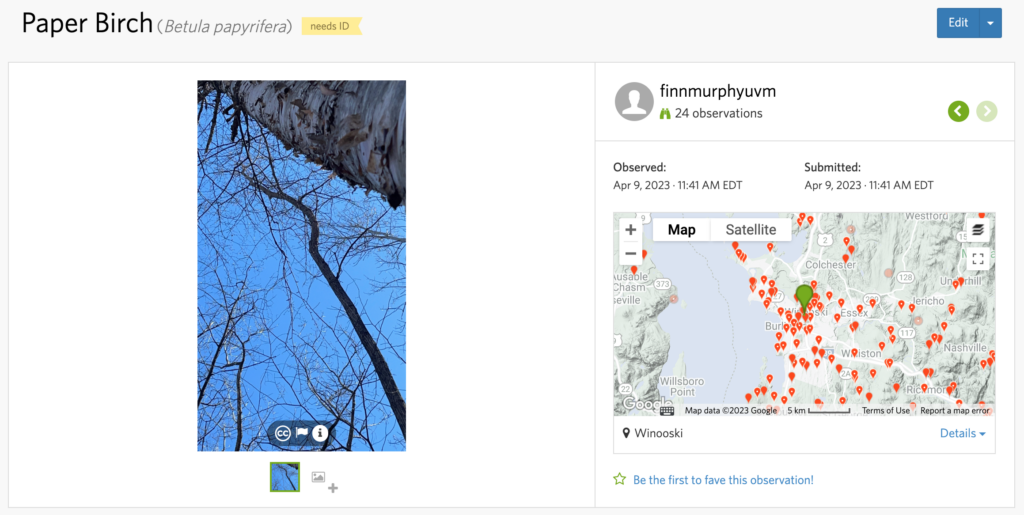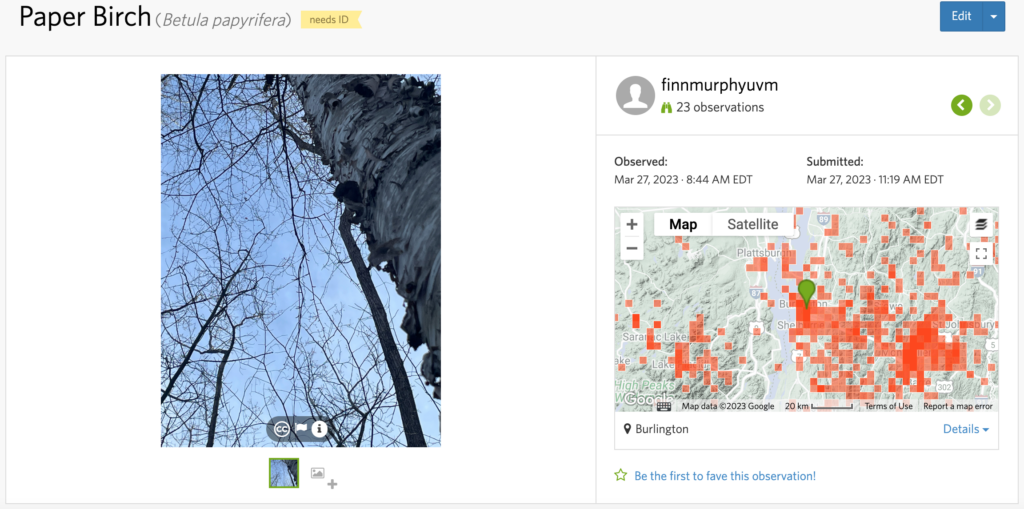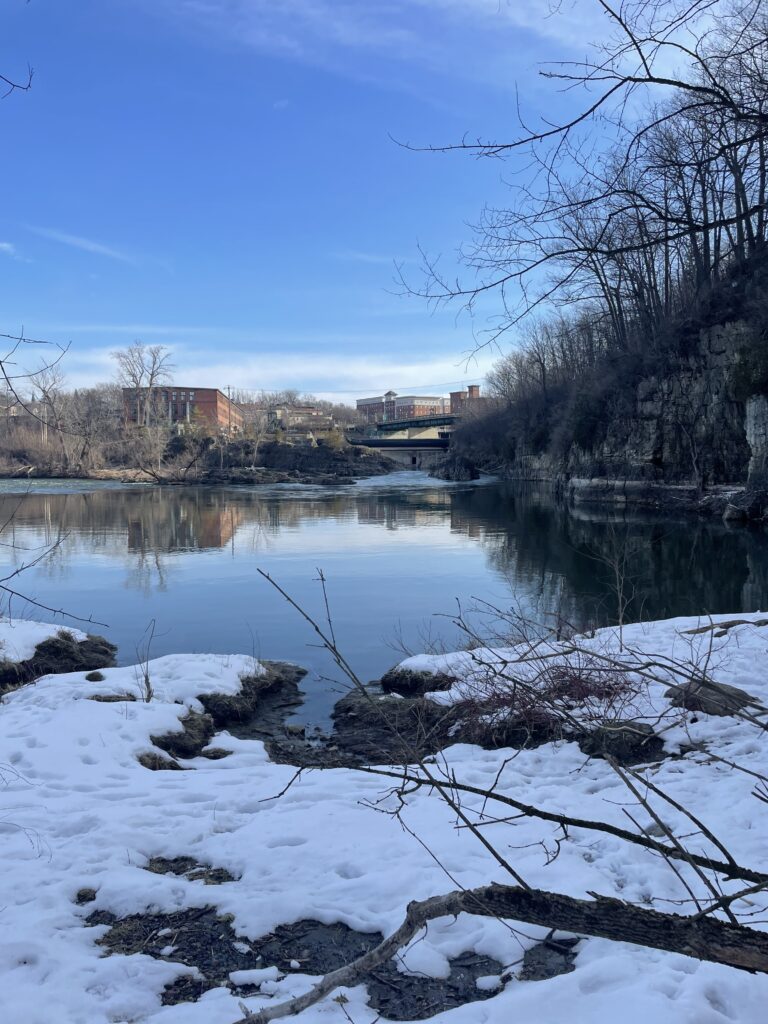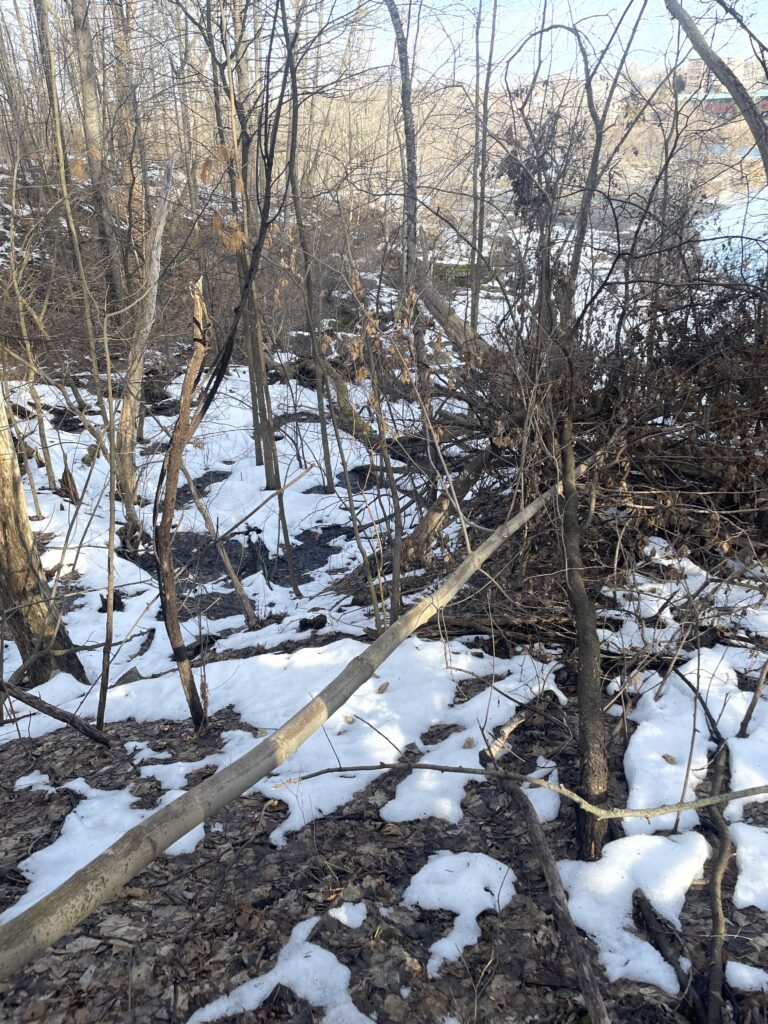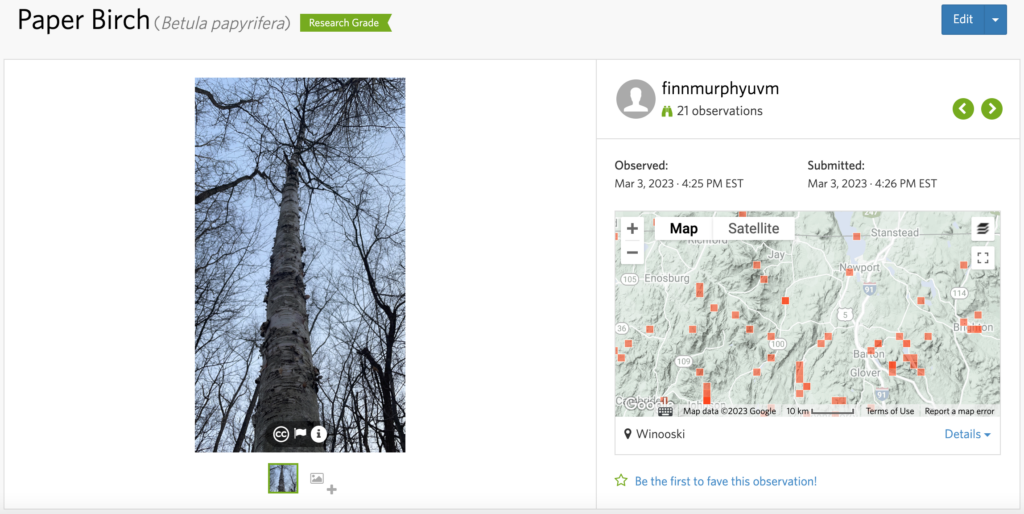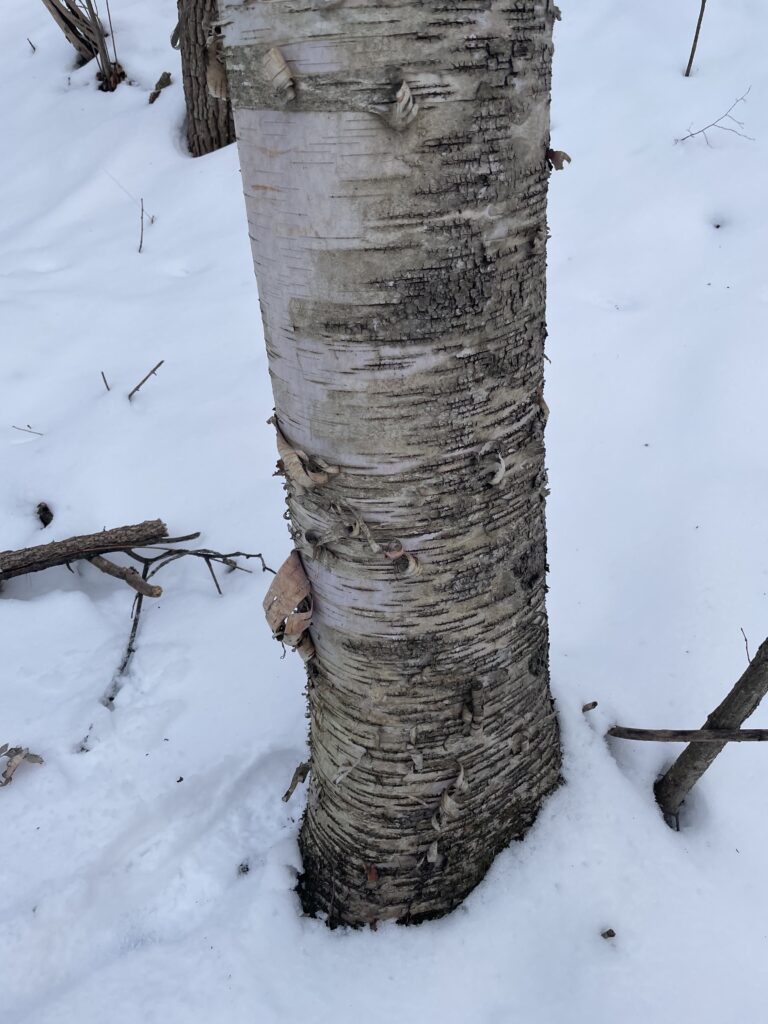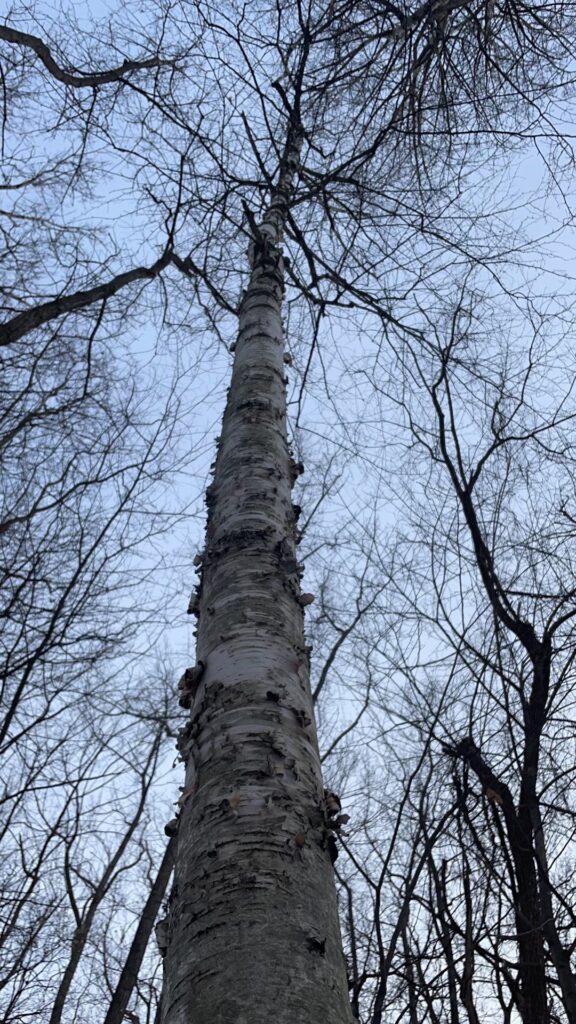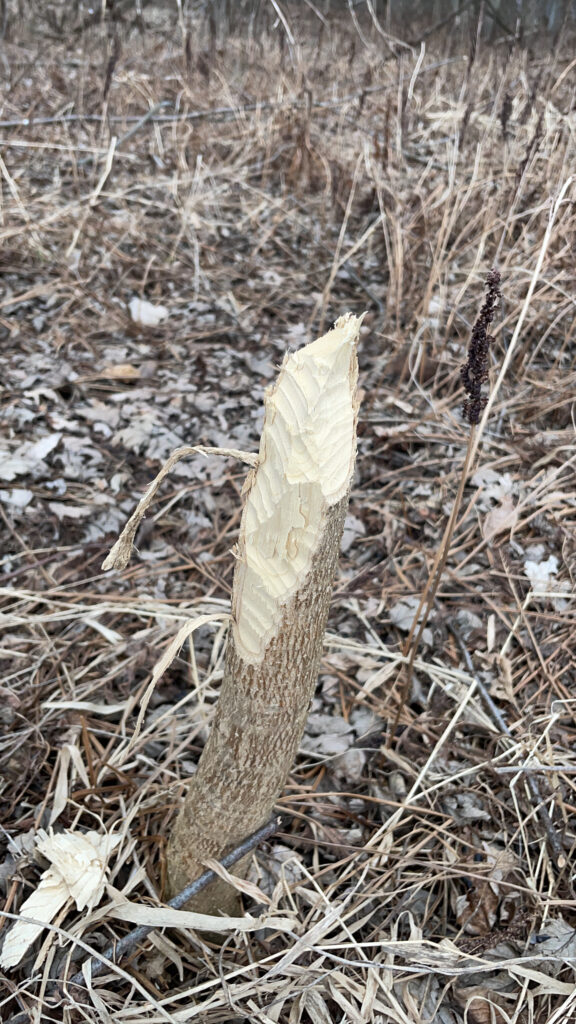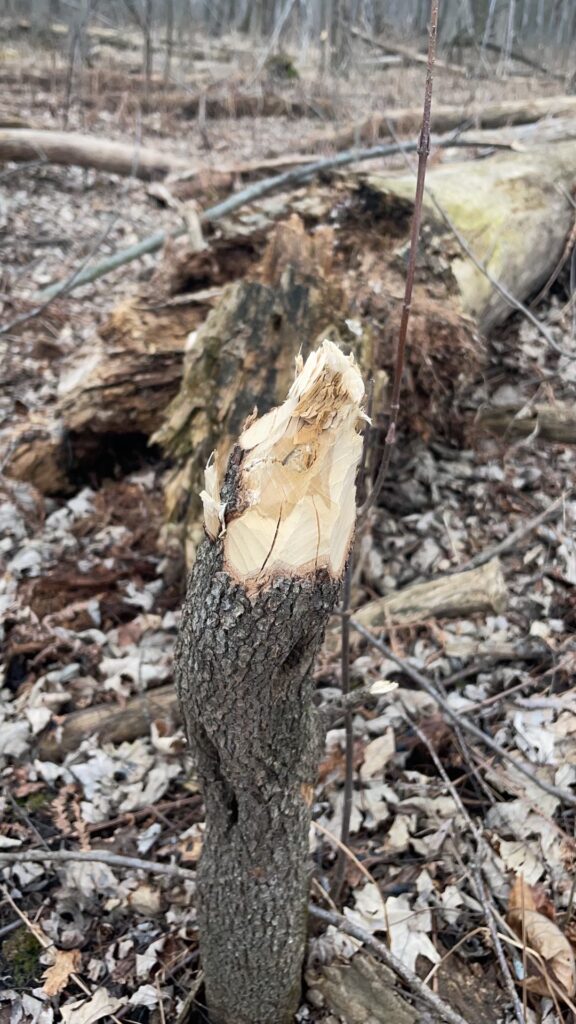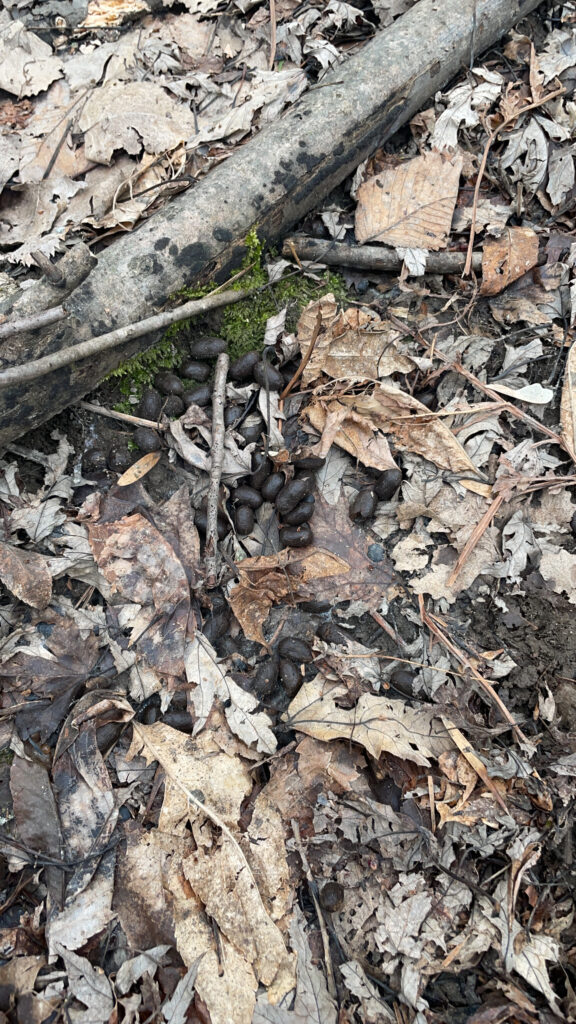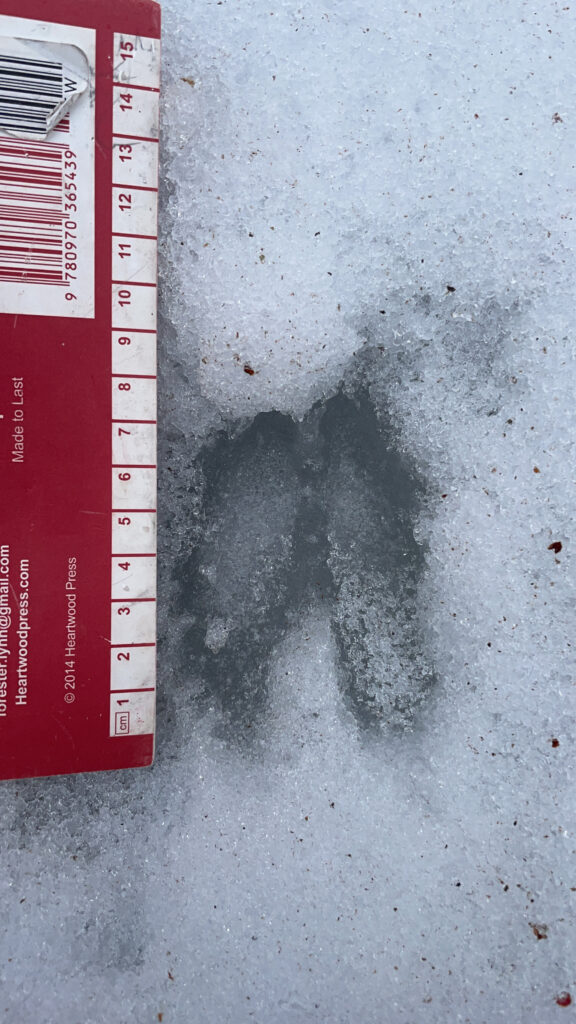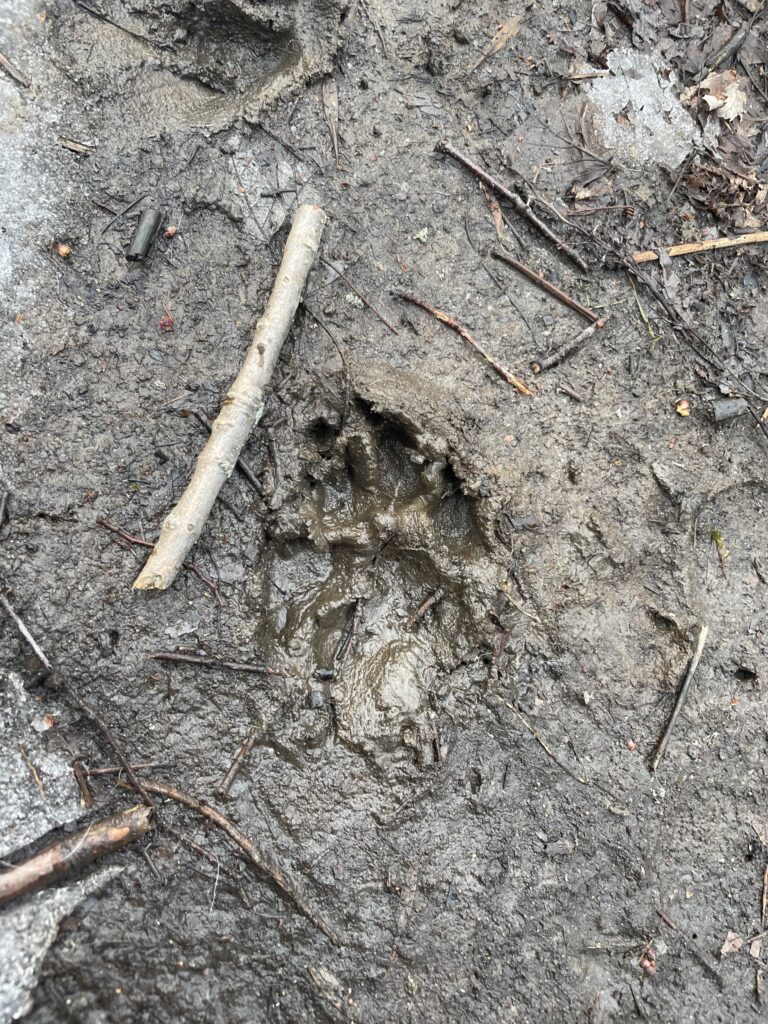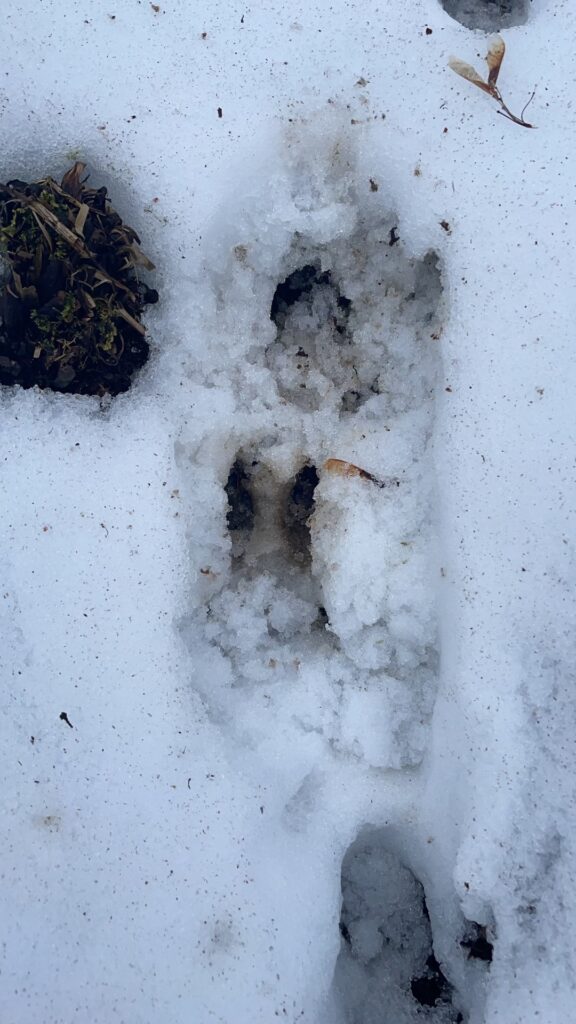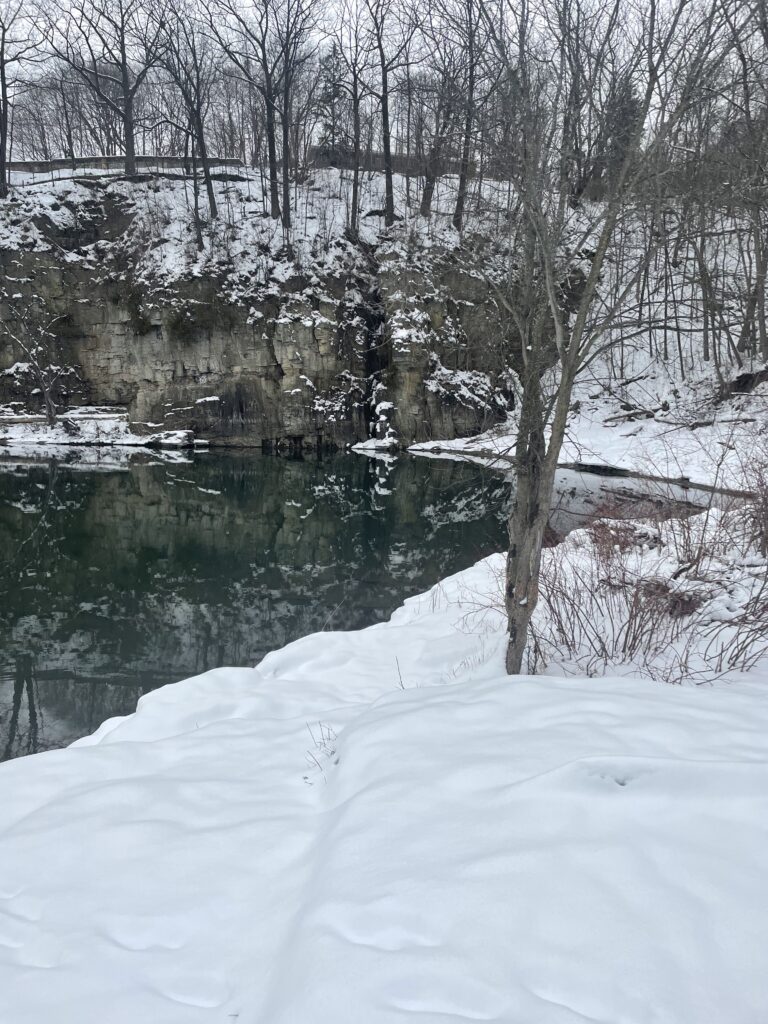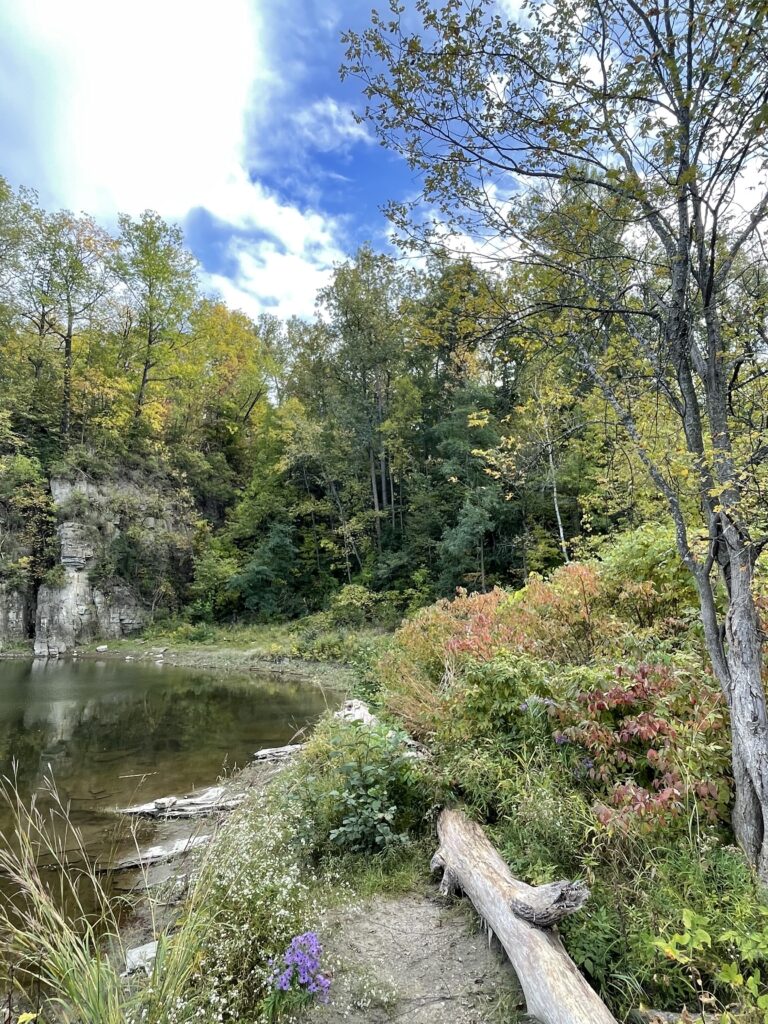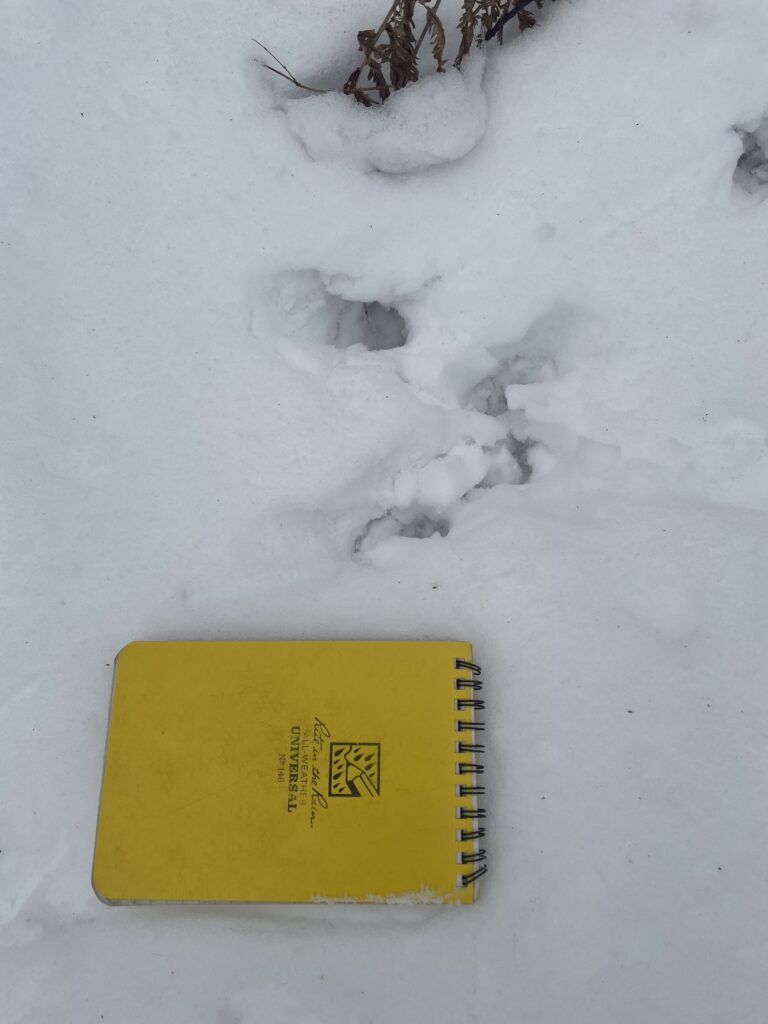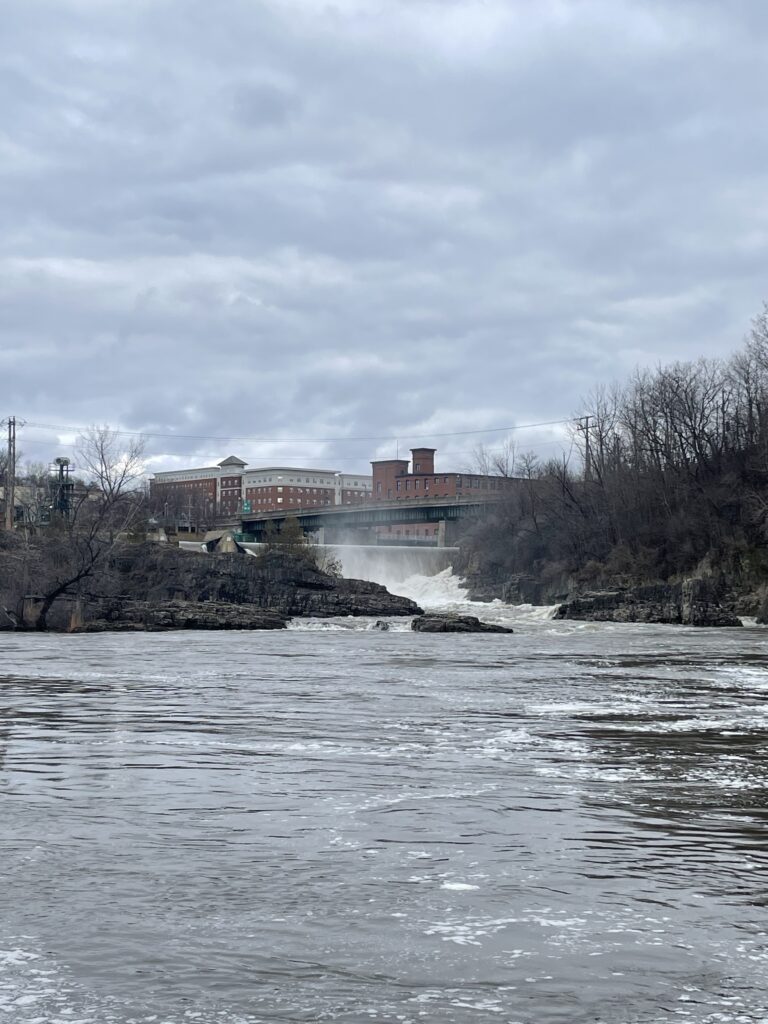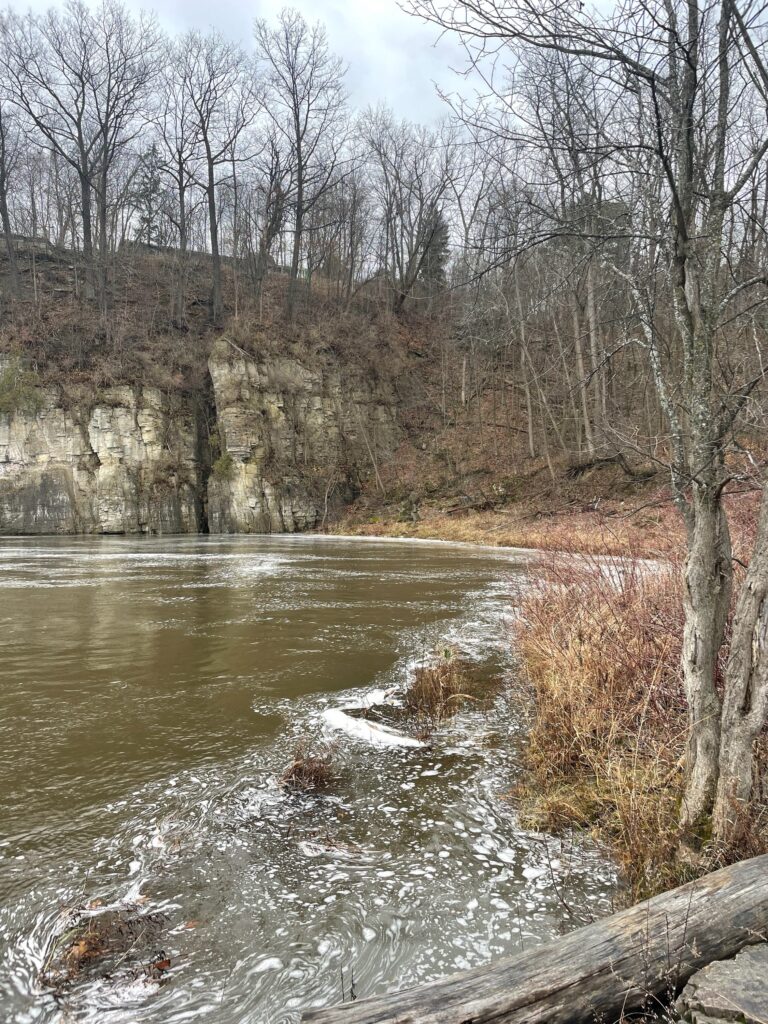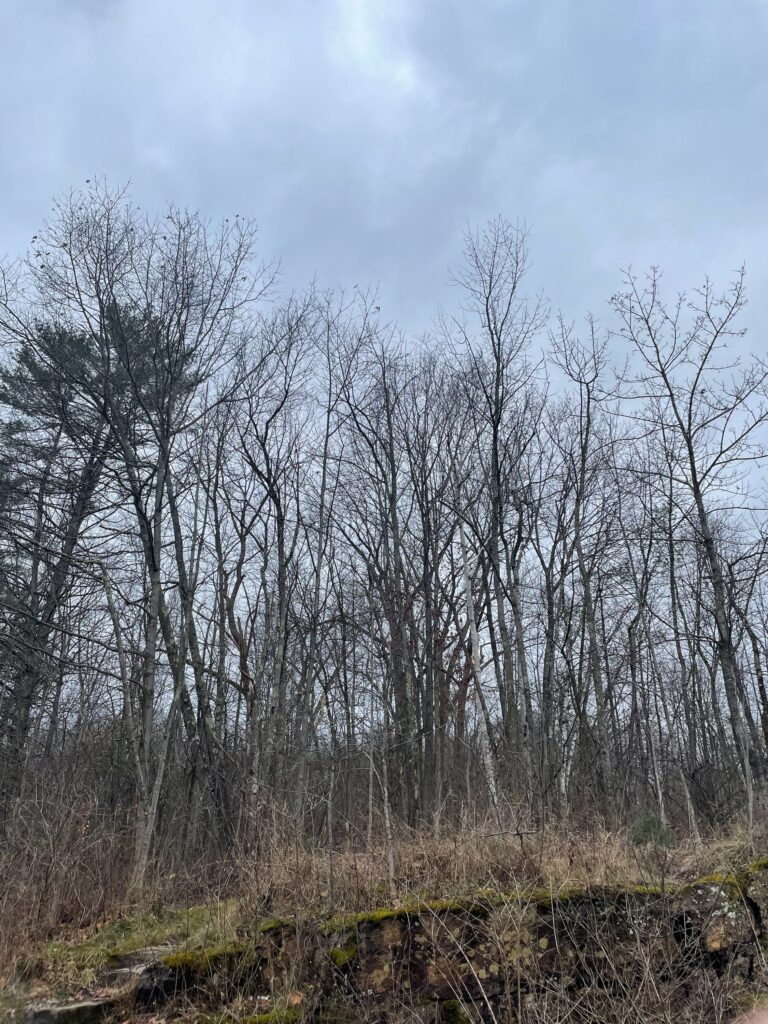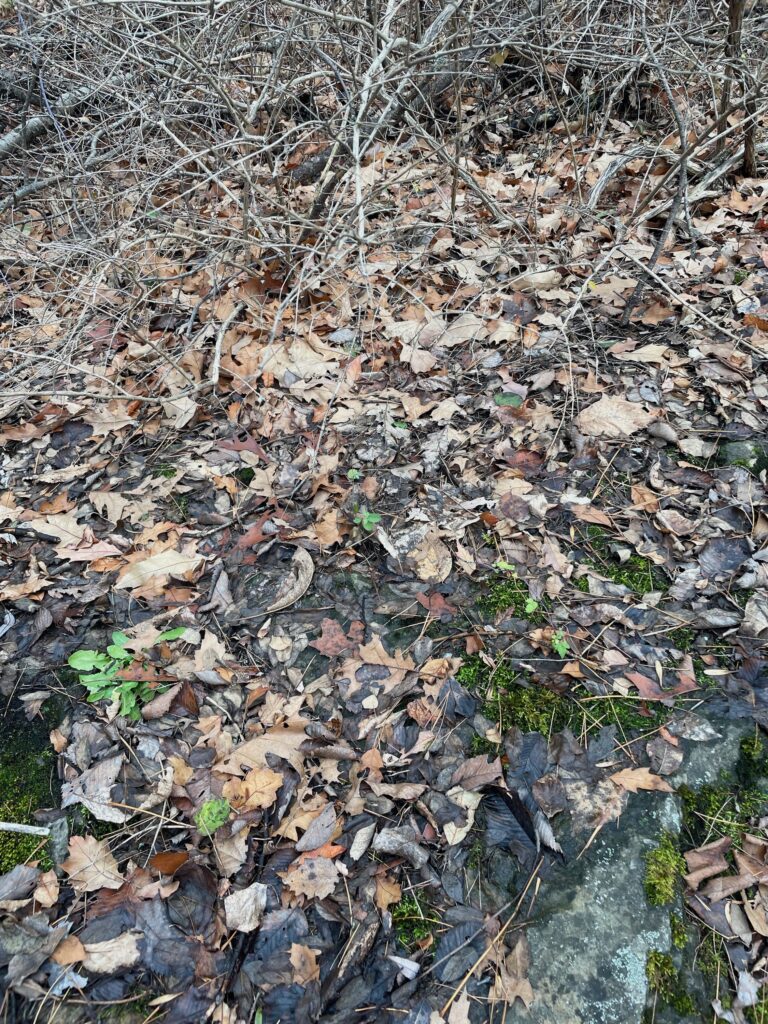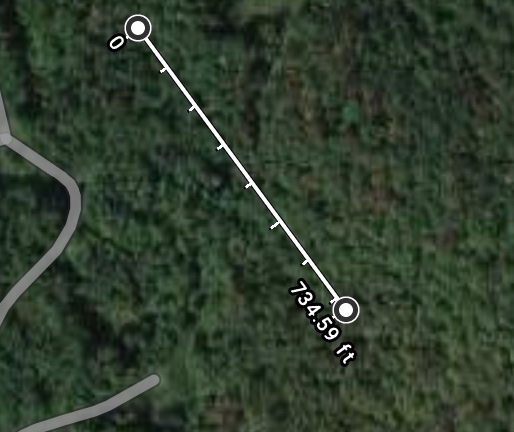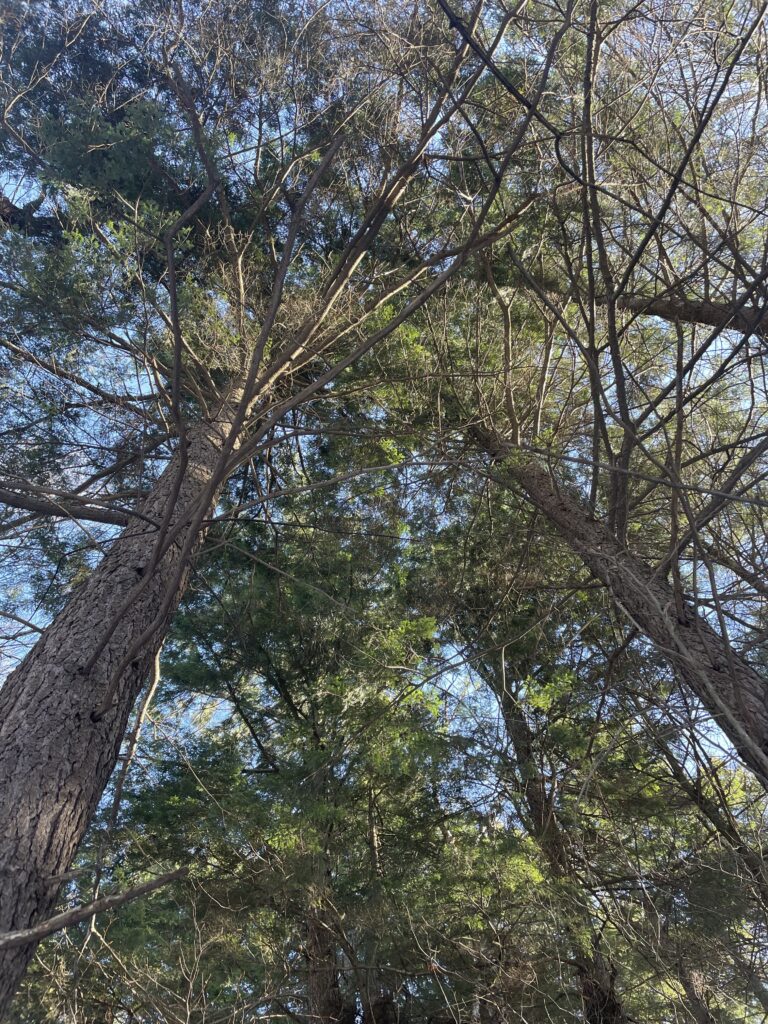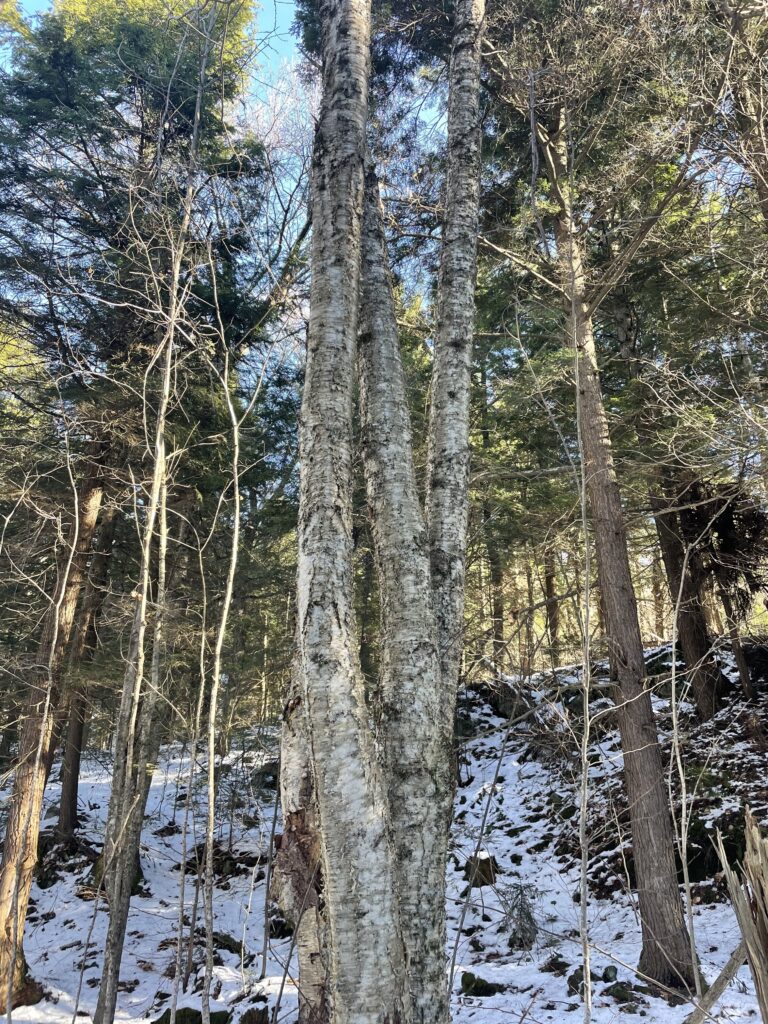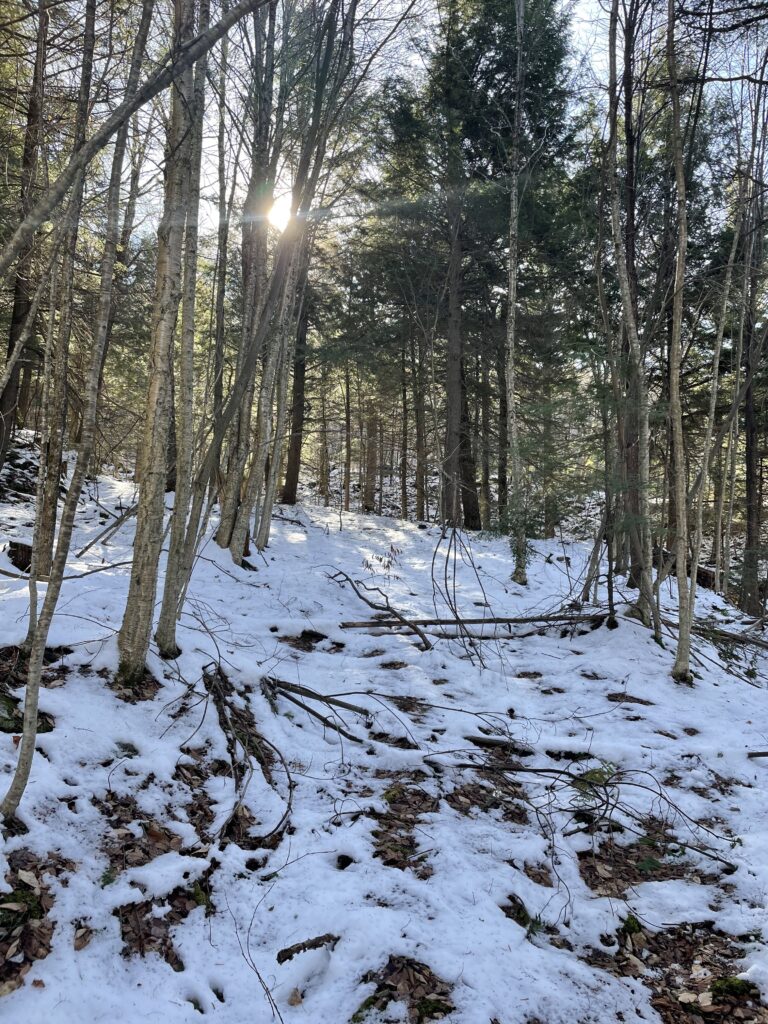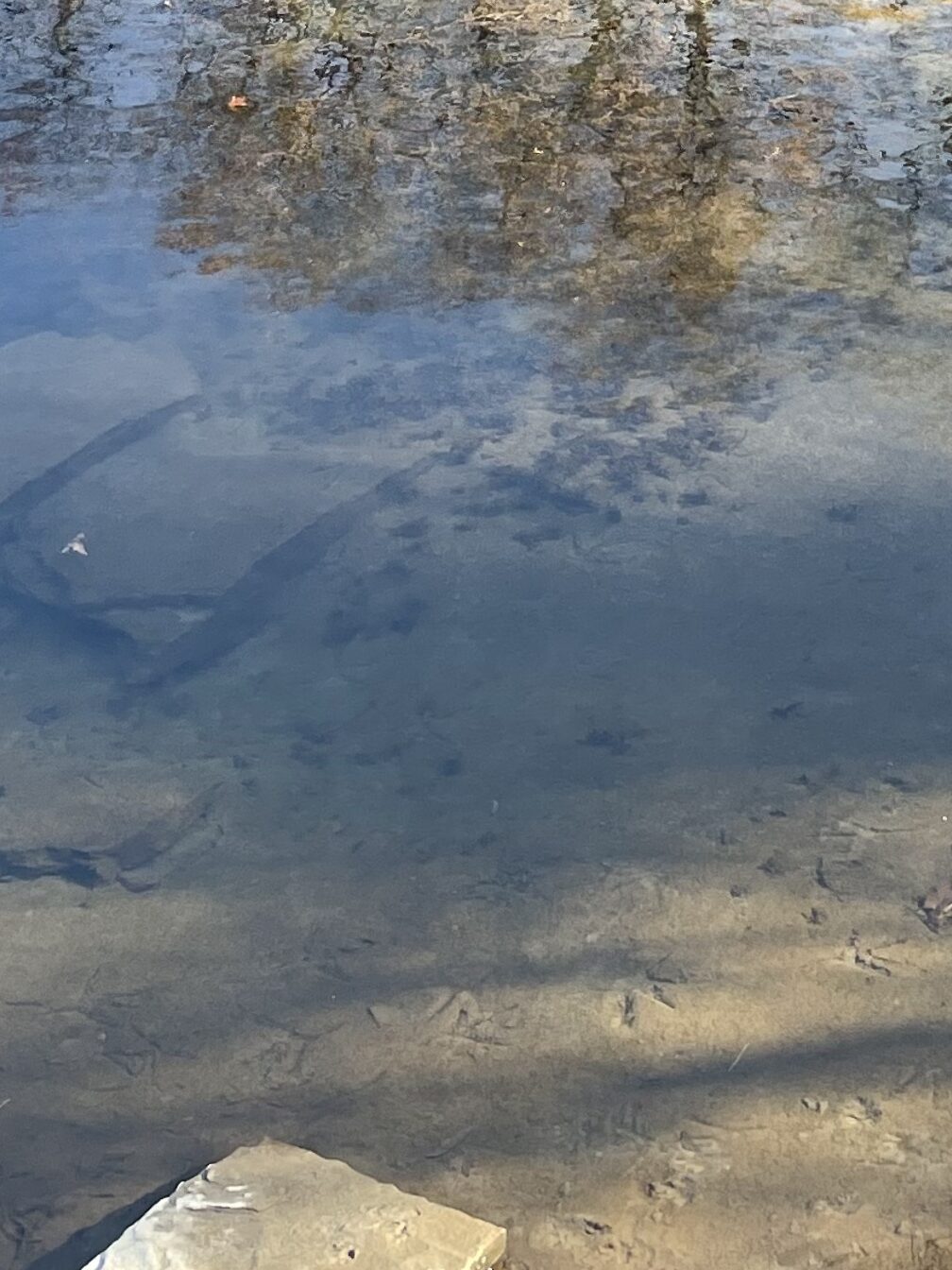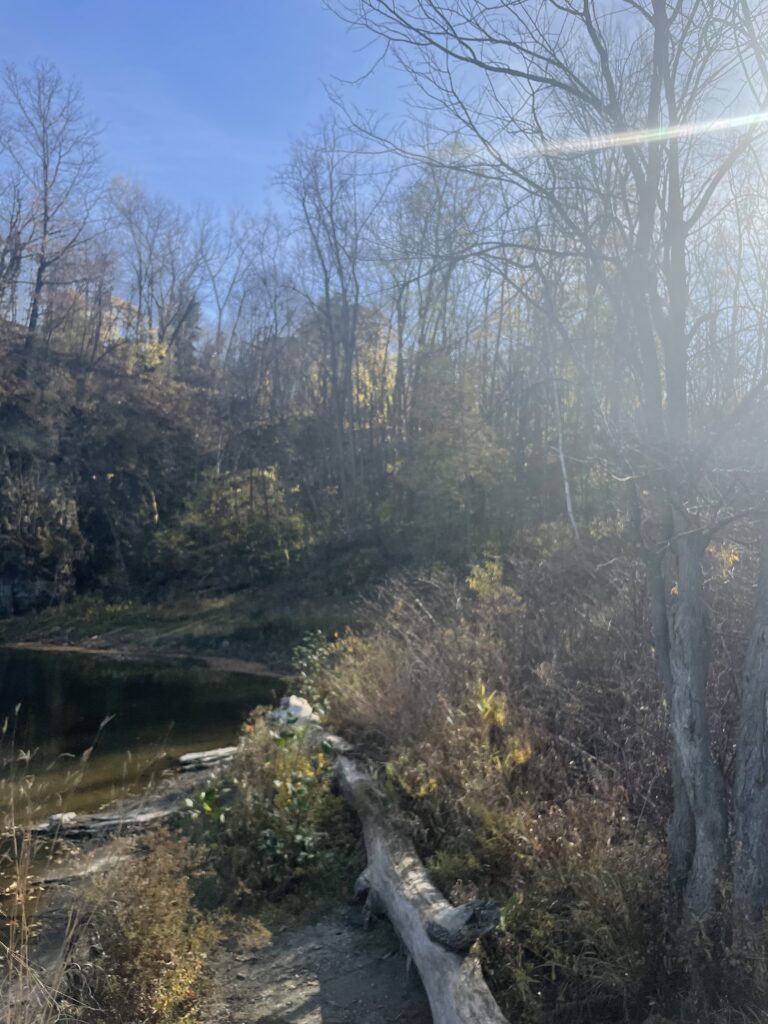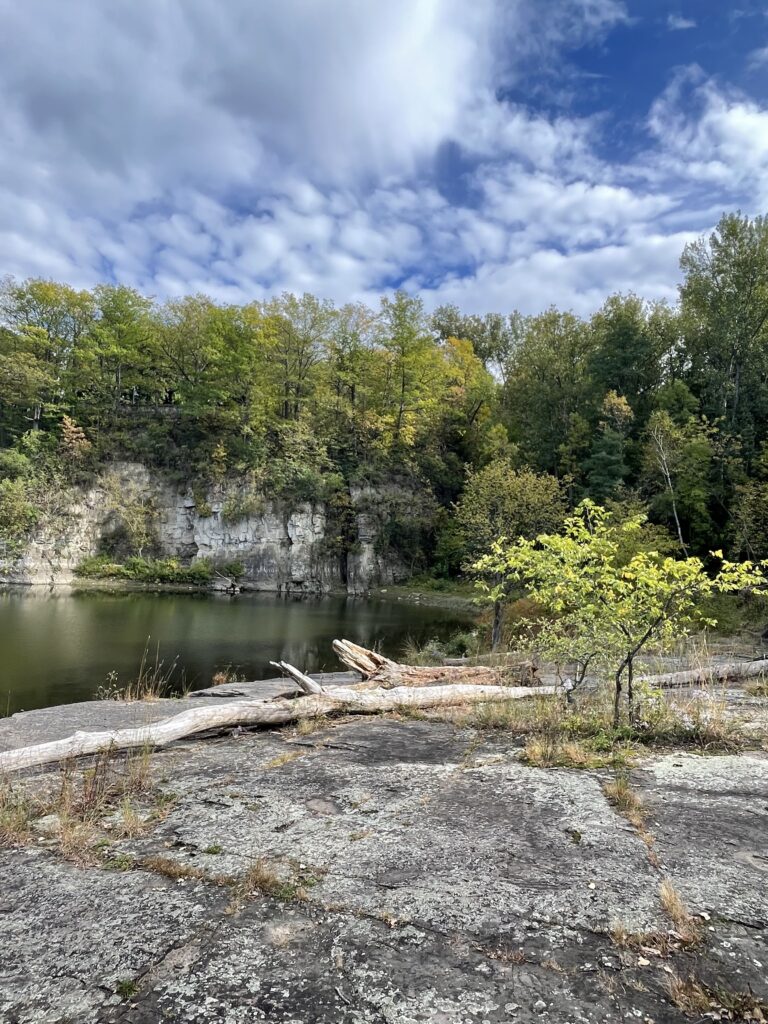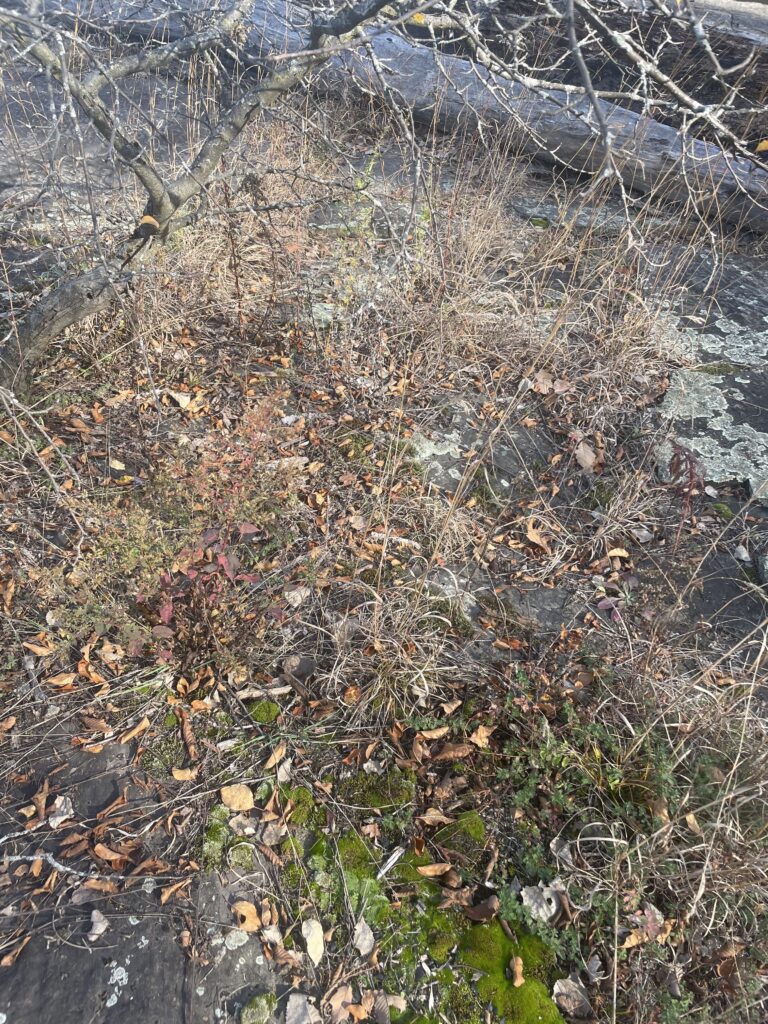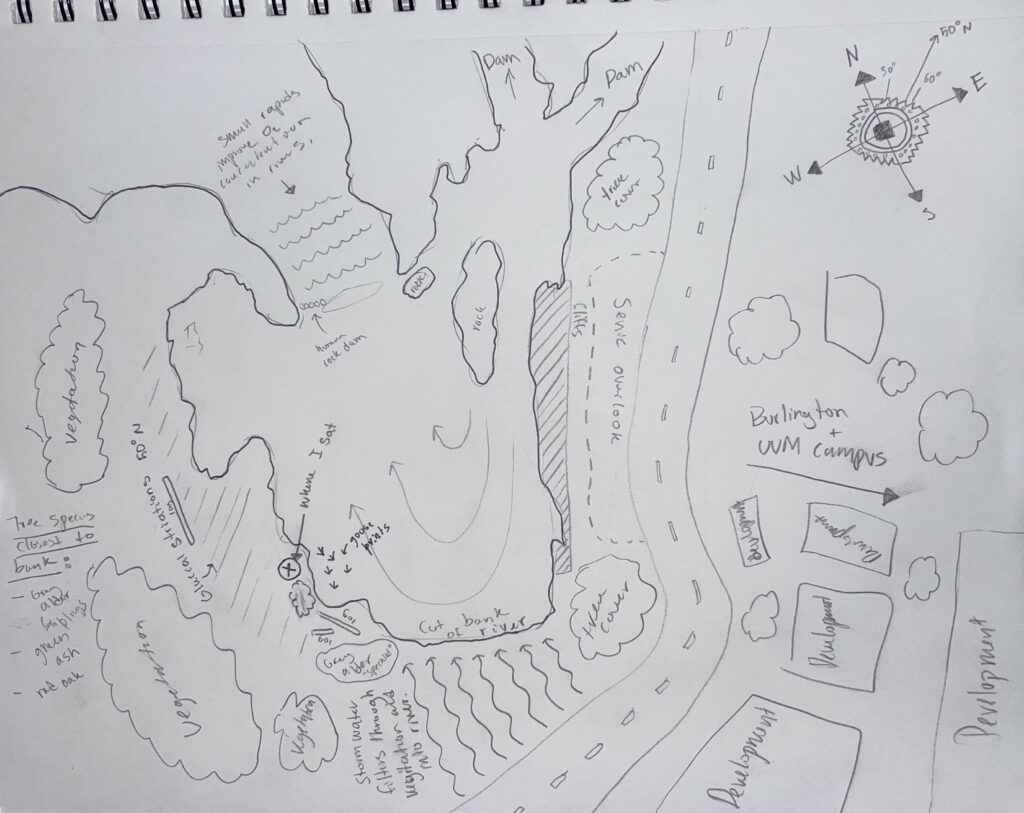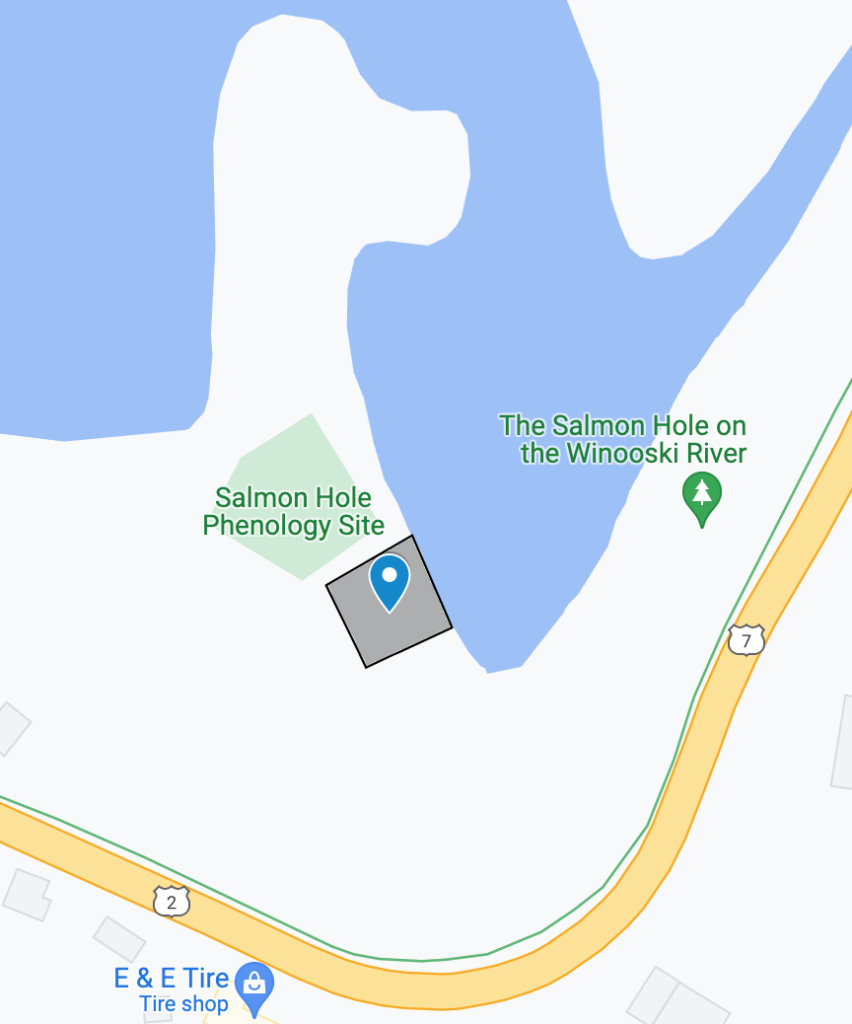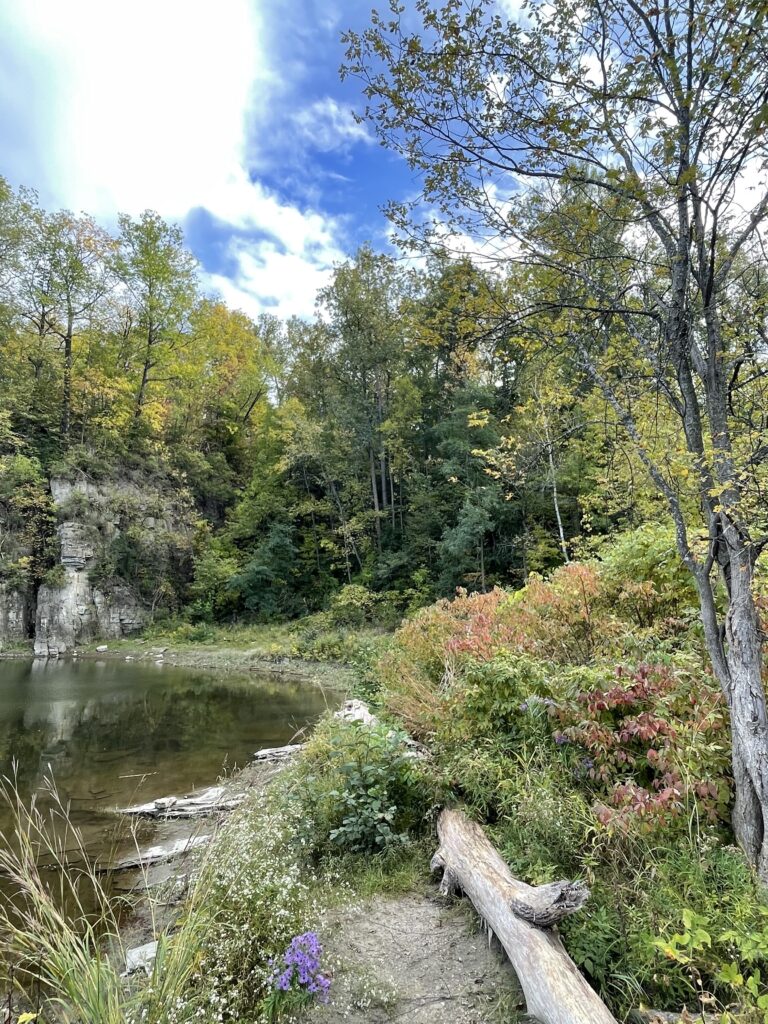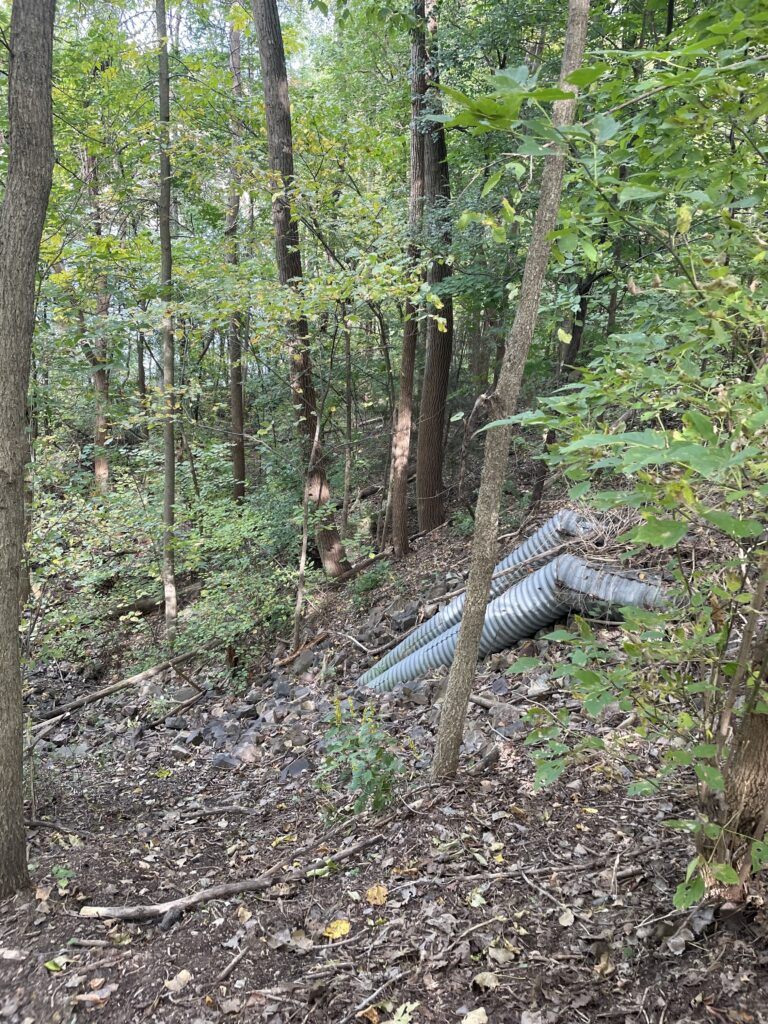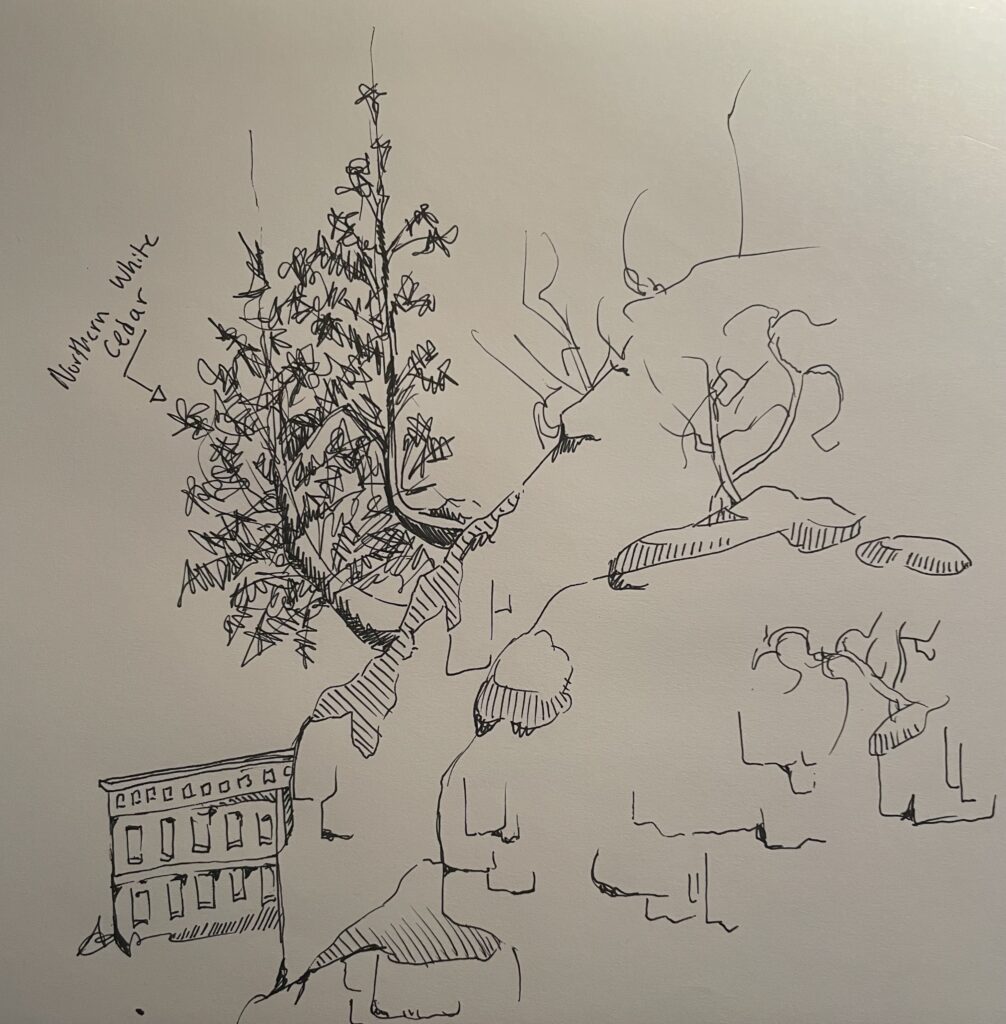
I have had the same Phenology Site since the first semester in NR-001. I have enjoyed watching my site transition from bright summer days into the fiery foliage of fall through a snowy winter into a budding spring. As the seasons changed so did the river that runs through my site. The Winooski was at times a raging avalanche of water rushing down from the mountains and occasionally its water was so low that the cliffs looked like they were an extra ten feet tall. The ebb and flow of the river rearranged logs and driftwood along the riverbank. The river would flood the banks of the Salmon Hole and leave behind piles of silty sediment and debris. I like to observe the power of the river and think about all of the material it has moved and the change it has created over the years.
I have grown fond of the two trees that I drew in my sketch above. These two Northern White Cedar jut out from the cliff face over the river, defying gravity. I enjoy looking at the elegant curve of their trunks that formed as they worked their way out from the cracks within the rocks they grow upon. These trees stand out against the cliff face and seem like improbable residents of such a desolate rock face.
The mix of the human and natural world intertwines nature and culture at my site. The salmon hole–a fishing site in the ancestral lands of the indigenous Abenaki People– is surrounded by infrastructure and industry. The Winooski dam lies upriver of my site and the massive factory buildings are reminders of the textile mills where thousands of immigrant workers and families found their way into life in Vermont. Salmon Hole is surrounded by reminders of how humans have effected the landscape. When you drown out the noise of passenger jets passing overhead and ignore the constant sound of cars passing by, this site can take you back to a time before colonization and you can try to picture a world without so many obstructions to a natural setting.
I consider myself to be a part of this place. I have been living within the Winooski watershed my whole life. Being able to observe the river so close to its estuary into Lake Champlain makes me realize how connected our world is. The water, land, and people are tied together through one large web of reciprocity, when humans ignore their responsibility to care for the land the whole system suffers. I feel like I am part of this system. It is my job to care for the land and try to put in as much as I take out.
